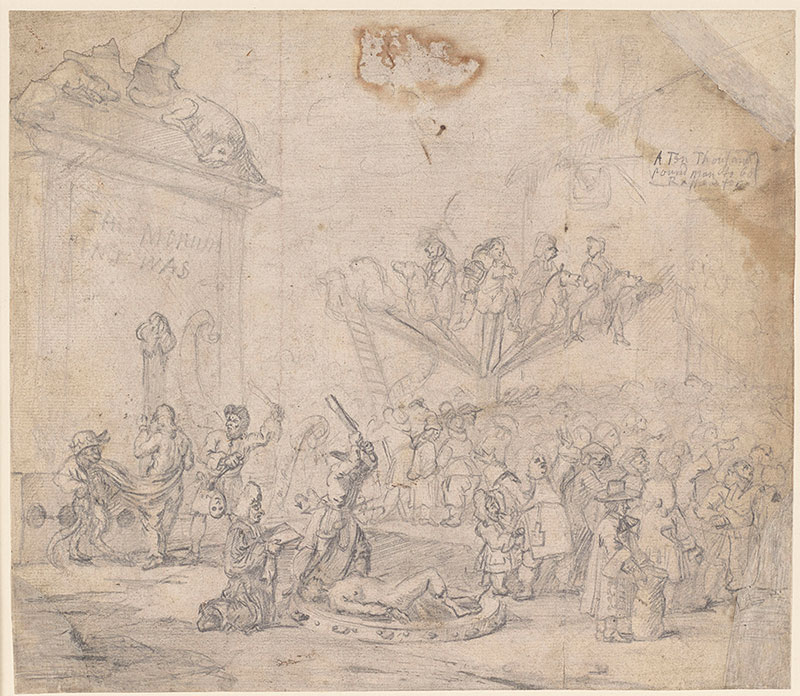
By 1720, Hogarth had set up his own shop as an engraver and enrolled in local drawing academies. He enjoyed his first success with prints satirizing contemporary political situations. In this drawing for one of his earliest engravings, the artist lampooned the perpetrators of a recent financial crisis. Thousands of European investors had become embroiled in a speculative scheme dubbed the South Sea Bubble and were financially devastated by its collapse. Hogarth’s interpretation of the consequences of speculation is particularly brutal. At center and left, the naked figures of Honor and Honesty are being beaten by Self-Interest and Villainy; a merry-goround twirls madly at center, laden with a prostitute, a nobleman, and a clergyman, reflecting the diversity of the scheme’s victims. This initial sketch reveals Hogarth developing his talent as a narrative artist steeped in the conventions of contemporary satire.
The South Sea Bubble
1721
Graphite; incised with stylus
Royal Collection Trust, Windsor Castle
Laurel Peterson:
This is Laurel Peterson, Moore curatorial fellow in the Department of Drawings and Prints here at the Morgan.
In 1720, the 22-year-old William Hogarth set his sights on a new career. After spending more than five years apprenticed to a modest silver engraver, he wanted to become an independent artist. He set up his own shop and entered the world of printmaking. Prints were widely available in 18th century London. They could be seen at booksellers, hung in print shop windows, and examined in one of the city's many coffee houses. Hogarth quickly began producing his own print designs, such as the preparatory drawing for a satire that we see here.
Graphic satires such as this one are forerunners to the political cartoons we know today. In the 18th century, they had become particularly popular as an increasingly literate and news-conscious group of people engaged with political events. In 1720, these prints proliferated when the financial bubble burst following widespread speculation in the South Sea Company, Hogarth's drawing of the South Sea Bubble juxtaposes allegorical figures with recognizable urban elements to critique the follies of that financial scheme. 18th century contemporaries populate the foreground.
Look at the priest wearing a wig just left of center. The large plinth towering over the scene is modeled on the well-known monument to the fire of London. The allegorical figures provide pointed commentary on the consequences of the scheme. They also suggest Hogarth's lofty ambitions as an artist for he draws on older imagery. For example, beneath the monument, the standing figure of honesty whose bare back is being beaten by two-faced villainy recalls imagery of the scourging of Christ.
